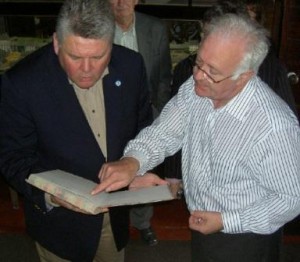 One of the most inspiring, green grassroots, profiles to hit the political scene in the last ten years must surely be the present Mayor of Seattle, Washington, Mayor Greg Nickels.
One of the most inspiring, green grassroots, profiles to hit the political scene in the last ten years must surely be the present Mayor of Seattle, Washington, Mayor Greg Nickels.
I had nearly given up all hope of finding a politician I could admire. They all, for the most part, appear spineless, with their resolves only stiffened by the corporate euro and this instinctive lust for re-election. Then I learned that American city Mayors are now in a state of green revolt – and it’s all due to one man, Greg Nickels.
Mayor Nickels, has managed to get American city Mayors from the Northwest to the deep South and almost every State in between, to agree that it’s a good idea for U.S. cities to beat or meet Kyoto Protocol targets, in an effort to reduce greenhouse gas emissions, despite the Bush administration’s total lack of support to this treaty. His greenness is not surprising; after all he has got green blood in his veins.
Greg Nickels great-great-grandparents left our town of Thurles in the early 1800’s & moved about five miles east of county Tipperary to the lovely quite rural village of Gortnahoe. Possibly because of the great Irish famine, (1845 to1849) this couple decided to leave the then, God forsaken land of Ireland, in 1852 and to emigrate to the USA. They settled in Illinois, where Mayor Nickels was born in 1955 the eldest son of Robert and Kathie Nickels. His family moved to Seattle in 1961 and he was schooled at Seattle Prep, then going on to attend the University of Washington.
Nickels began his political career in 1979 as an adviser to city councillor Norm Rice, who went on to become the city’s first and only Afro-American Mayor in 1989. Nickels himself secured election to the King County Council in 1987 and was re-elected on three subsequent occasions. Nickels was serving on King County Council when he sought the Mayoralty against then incumbent Paul Schell, in 2001. Nickels beat the incumbent in the first round of voting in the city’s non-partisan election and was re-elected as Mayor again in November 2005, by a large margin.
Recent Executive Orders signed by Mayor Nickels demonstrate his commitment to a greener and healthier environment. He has recently directed that after the 31st. December, 2008, Seattle City funds will no longer be used to purchase bottled water given the high-quality of the municipal water available to the cities consumers. The Executive Order also directs city departments to eliminate the funding of bottled water dispensers in most circumstance.
Americans bought a total of 31.2 billion litters of water in 2006, sold in bottles mostly made of polyethylene terephthalate (PET), requiring nearly 900,000 tons of plastic,all produced from fossil fuels. In 2006 it is estimated that producing these bottles for American consumers required the equivalent of more than 17 million barrels of oil. This estimate did not including the energy required for their transportation. The majority of the world’s PET production is for synthetic fibers (in excess of 60%) with bottle production accounting for around 30% of global demand. Producing bottled water required 3 litres of water to generate each single litre of water and produces more than 2.5 million tons of the greenhouse gas, carbon dioxide. The City of Seattle’s Public Utilities, now provides some of the highest quality water in the land, guaranteed to equal or exceed the quality of any bottled water produced. In Seattle the average price for bottled water is approximately $1 per pint bottle (16 oz.) or $8 per gallon while the average price for Seattle water is only 1/3 of 1 cent per gallon, making bottled water approximately 2,400 times more expensive than the cities drinkable water.
Mr Jim McGuire, Senior Co.Tipperary Engineer with responsibility for water services, speaking to Thurles.Info, confirmed that drinking water in Thurles currently meets all Irish and European standards, laid down.
Mayor Knickels last visited his ancestrial home of Thurles in 2007, and is pictured here with local museum curator George Willoughby examining the rare Minutes of the Thurles Rahealty Famine Food Committe book of 1846 and 1847 at St.Mary’s Famine Museum in Thurles.

Leave a Reply